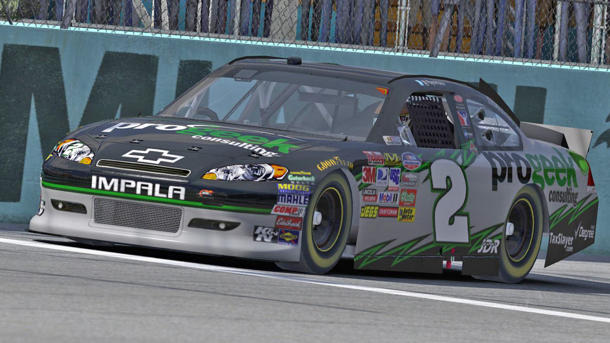While the NASCAR season-ending Chase for the Sprint Cup won't end until November, the world of computer-simulated stock cars crowned its champion this week, with Paul Alfalla driving his No. 2 Chevy Impala to a fifth-place finish on iRacing's virtual Miami-Homestead race track. His prizes include $10,500, championship swag delivered at the actual NASCAR race and having his name join a growing list of desk jockeys who could see time on real pavement.
Simulated racing has grown far past the point of just another networked game; iRacing's top series has backing from NASCAR, Formula 1 and other racing bodies, and the contests can be as competitive -- and nearly as complicated in vehicle set-up -- as those on a real track. Dozens of professional racers use iRacing rigs to practice unfamiliar tracks, and while the system can't model every moving part of a racecar, its approximations are close enough for most. One example: Earlier this year, real-world NASCAR teams started picking up speed by putting more "skew" in their rear suspensions, letting their cars slide through corners faster -- a trick the iRacing teams stumbled onto nearly simultaneously.
Alfalla, a student at Florida Gulf Coast University, has ranked among the premier iRacing members since winning the top-level NASCAR league last year. Many young racers also use iRacing for training, but the service has not turned desktop-only drivers into track heroes; iRacing road course champion Greger Huttu first turn in a real car ended with car sickness. Other players have made the leap, namely from the Nissan-sponsored academy for gamers of Sony's Gran Turismo. Alfalla has said he'd like a shot at a real ride, and given how much practice he's had behind the wheel of his monitor, he'd have more experience than some stock-car wannabes.
Here's Alfalla's winning ride, shot from his three-monitor home setup:
source
